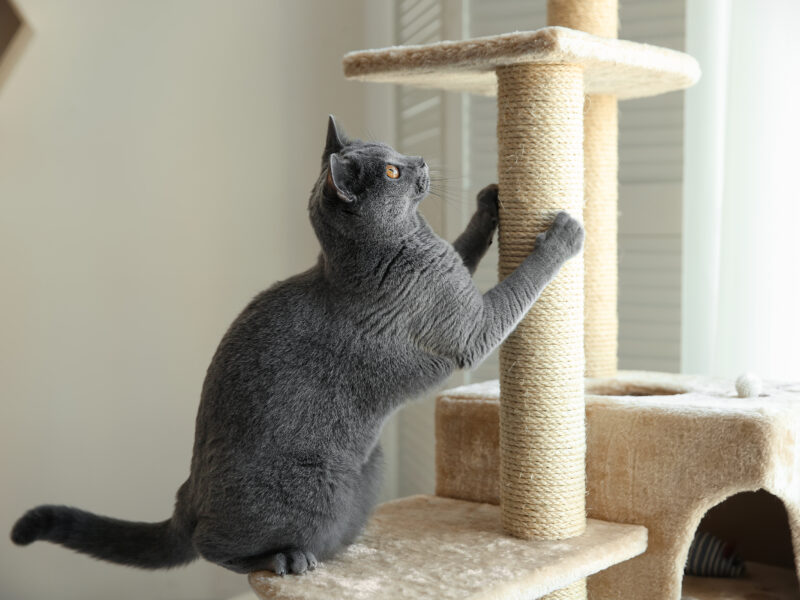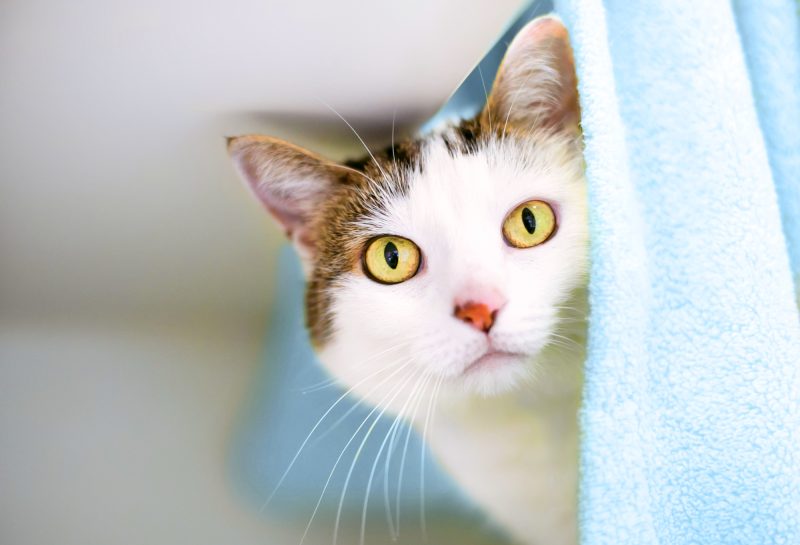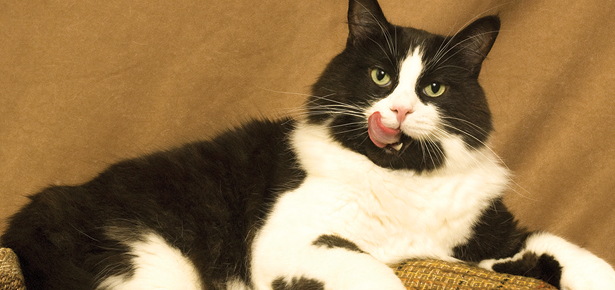
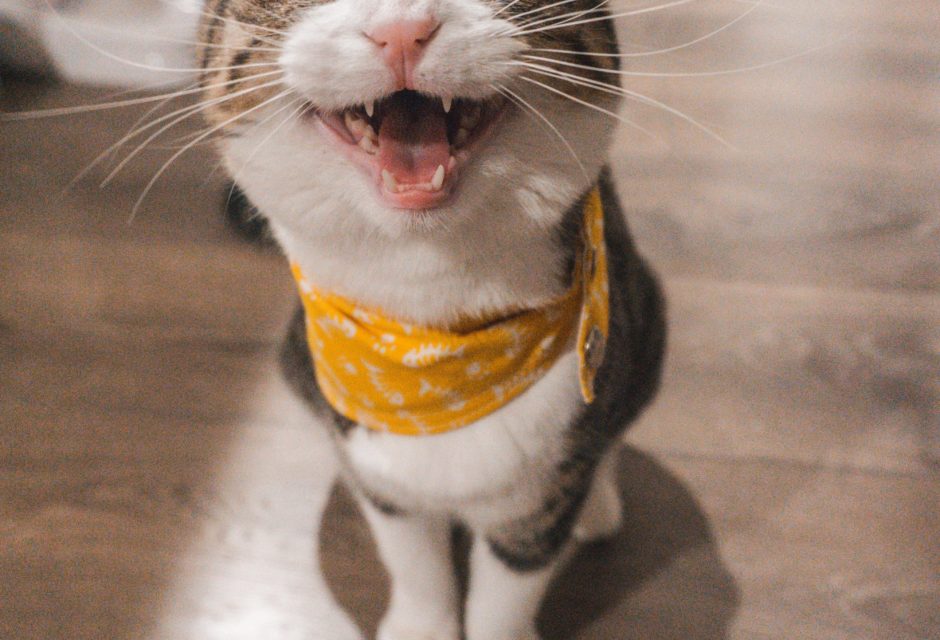
What Your Cat Really Wants
Give your cat these essentials and you’ll both enjoy a long, loving partnership.
We love our cats, not only for their companionship, but for their ability to help us preserve a connection with the untamed world. With three paws in our hearts and one in the wild, they connect us to nature in a way that other pets cannot.
But, despite their independent, self-reliant abilities, our cats still need us. Though not as needy as our dog friends, cats nevertheless require certain fundamentals to be happy. Without these, they can evidence behavioural and physical problems which lower their quality of life and strain our partnerships with them.
Of course, we all strive to provide a high quality diet and ensure that Ginger gets regular veterinary care, but beyond good food and good health, there are other, less obvious, factors that contribute to her well-being.
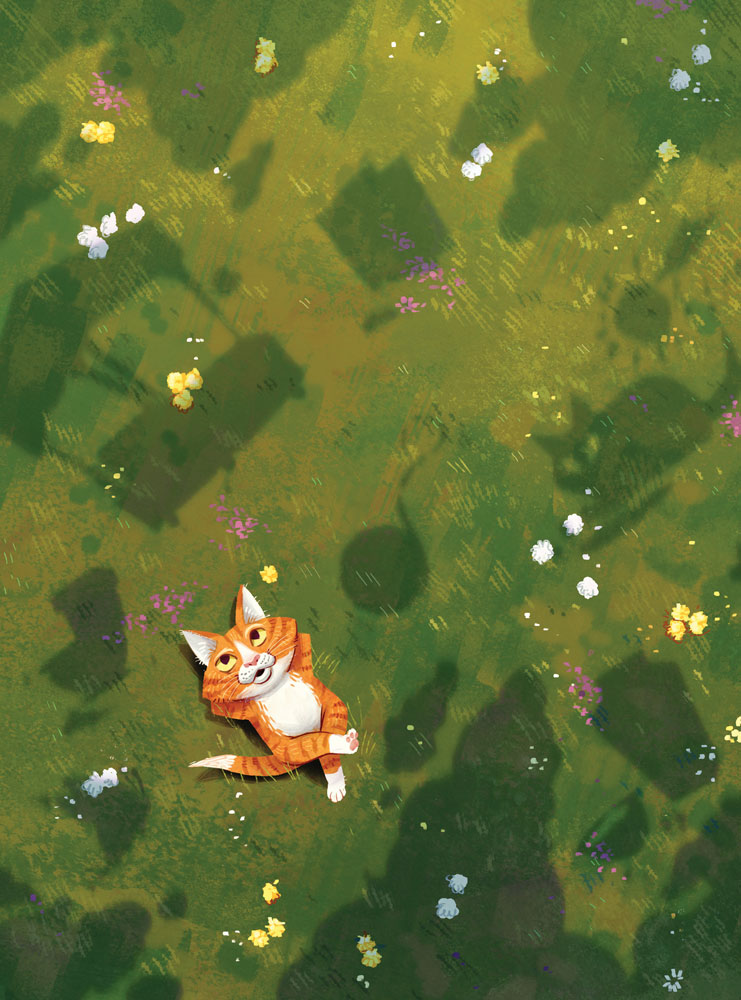 Illustration by Kim Smith
Illustration by Kim Smith
The Cat Came Back: Territorial Stability
Space means a lot to felines, who, in the wild, covet it even more so than do their more sociable canid brethren. Territory, vital for hunting and mating success, is well-defined and defended. Your domestic cat is no different; she wants to live in a stable, predictable environment, with enough space to feel safe and in charge. Territory for your cat is a four-dimensional affair. She not only patrols the home from room to room, jumping up to stalk along refrigerators or cupboards, or slipping under beds and dressers; she will do so at varying times each day. This “time-share” phenomenon can allow multiple cats to share a finite territory; while one rests, another can patrol the same space without undue conflict. Provide your cat with a stable, safe, relatively stress-free territory. This means not creating unpredictable conditions that could traumatize or threaten her. Loud music, having the neighbour’s kids over to play tag, or throwing a wild party every Saturday night could all disturb her enough to trigger backlashes such as housetraining mishaps or destructive behaviour. Even redecorating your home can stress some timid cats enough to cause anxiety, so be sure to make changes in the physical environment slowly, over time.
Try not to move your cat’s litter box or food dishes around once they are in established spots. And, though you love all cats, yours may not take kindly to you adding new ones into her territory. The easiest path to peaceful multiple cat cohabitation is to get two kittens at the same time. The next easiest route is to, bring a kitten of the opposite sex into an established adult cat’s home. Keep in mind your particular cat’s personality and that too many adult cats in a small space, despite their ability to “time-share” territory, can lead to conflict and behavioural mishaps, so, if your resident cat is intolerant of other felines, you may wish to err on the side of caution and let your cat lord it over your home without competition.
Make your cat’s home territory as safe as possible. Avoid toxic houseplants, cover exposed wiring, and secure all doors and windows. Keep all chemicals and cleaning supplies locked away; even soaps or perfumes can poison a cat, so take care to cat-proof any area she inhabits.
Don’t Go Changing to Try and Please Me: Routine
Cats like routine, consistency, predictability. This harkens to the feline instinct to establish a stable, dependable environment. Like many of us, they are a bit obsessive about things and like it that way. Change the home routine too often and you’ll stress her out and invite trouble. It’s why, when cat owners move, their cats often run off in search of their old digs. Or when you return from vacation, your cat will often give you the cold shoulder for a few days. Switch from the swing shift to the morning shift and you’ll see the same reaction. Keep the timing of things as routine as possible. Feed her at the same time, play with her at the same times. Whatever your own schedule tends to be, try to stick to it. Avoid changing things such as the food dishes, brand of litter, or even the actual litter box. If you add furnishings, do so one piece at a time. Paint one room at a time. New scratching post? Don’t toss the old one; instead, place the new one next to it.
The bottom line is to “tiptoe” change into her life, instead of bowling her over with a sea change of modifications. As a cat, she’ll be more amenable to that type of strategy.
I Love You Just the Way You Are: Respect
Every cat has a distinct personality that must be identified and respected in order to have harmony in the home. For example, some cats revel in the attention of guests, while others slip away and hide when company calls. Take that shy cat and immerse her in a busy social environment and you may never see her again. Conversely, if your cat is a social butterfly but gets little face time with other people, she may start acting out through excess vocalization, or any manner of undesirable behaviours. It’s simply how they express their dissatisfaction with the status quo.
If she is shy and tense around company, don’t force the issue. Let her decide when she wants to interact. If she likes company, by all means let her mix to her heart’s content. Identify what her preferences are, then encourage them, while limiting stimuli she finds scary. If she clearly likes other cats, consider getting another, but if not, don’t put her through it. Don’t force a timid cat to snuggle; rather, let her come to you, a sure sign that you can love on her. Whatever your cat’s personality, letting her initiate contact is a good rule of thumb to follow.
Lastly, remember that cats, unlike most dogs, will hold grudges with regard to behaviour she deems scary or confrontational. If a child steps on Ginger’s tail, she’ll likely avoid that child for quite a while. If someone accidentally trips over her, she could hold it against that person for a long time. Accordingly, use her personality to determine what she will and will not tolerate, then stick to it.
The Eye of the Tiger: Enrichment
Though cats like the status quo, they also enjoy having their senses and intellect stimulated. It’s a function of them being effective predators; to be content, they need to have that inquisitive, hunting instinct aroused. Zookeepers hide meat around the lion and tiger enclosures in trees and shrubs; you should do the same around your house.
Provide your cat with objects, activities, and incentives that will stoke her natural curiosities. These “enrichments” can be as simple as adding a sisal scratching post to your home, or leaving the radio on a classical music station. Click here for a list of easy enrichment ideas for your cat.
Because You’re Mine, I Walk Feline: Cat Awareness
Last but not least, understand that your cat lives in a world defined by her needs and interpretations, not yours. She thinks of you not as a human, but as a gigantic maternal figure. She is a master of the sensory, and owns a physicality that dwarfs our own. To that end, try to develop what I call effective feline empathy. Instead of humanizing your feline, try to “be the cat” as often as you can. See things through her eyes, and be in the present, as is she. Smells, sounds, light levels, temperature, body posture—whatever you think a cat might respond to, try to notice. This clarity of surroundings is what she is all about, so try to empathize with it. It will make you a better cat owner, and a better friend.
Join the newsletter and never miss out on cat content again!
"*" indicates required fields
By clicking the arrow, you agree to our web Terms of Use and Privacy & Cookie Policy. Easy unsubscribe links are provided in every email.





